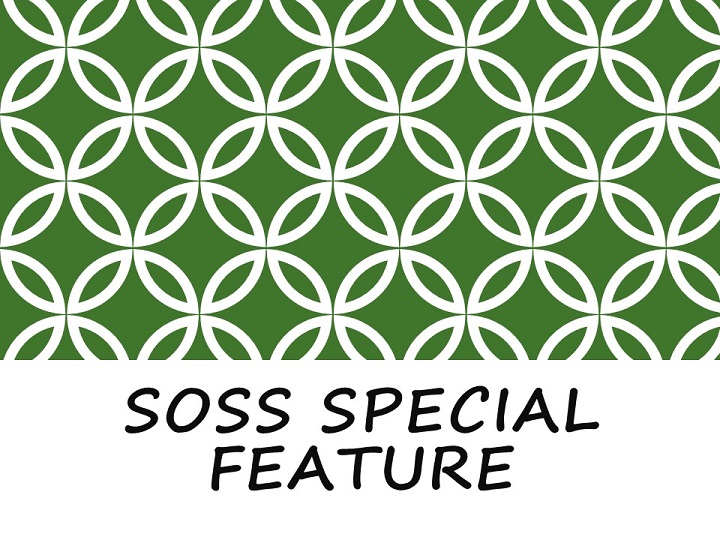
Jason Tan Han Wei
BSocSc Class of 2019
What exactly is the Way of Life? I wonder if “achieving immortality” ever comes to mind, as an answer to such a question. What if I told you, some of us live our lives only to achieve a level of perfection, perfection that allows us to live forever?
Empirical sciences have perennially debunked the notion of immortality, because of the sheer lack of evidence that could prove an ability to live forever. I have lived my life believing that immortality is a myth, and can never be achieved. Even in our Chinese philosophy classes, we do not explicitly establish that immortality is an achievable feat. However, my visit to San Qing Gong Daoist temple took apart this belief, and turned a myth into an assumption.
 The San Qing Gong Daoist Temple
The San Qing Gong Daoist Temple
Weiyi, the Daoist monk who took the Chinese Philosophy students around San Qing Gong, introduced the conception of immortality to us as a metaphysical idea. Daoist immortality does not reside in our physical being transcending age and time; instead, we learnt that Daoists strive to achieve spiritual immortality. They spend months, years, and decades cultivating the self, reflecting on life, and trying to synthesize with nature to achieve spiritual immortality, where the soul and the spirit lives on forever, even as the physical entity surrounding it dies and decays.
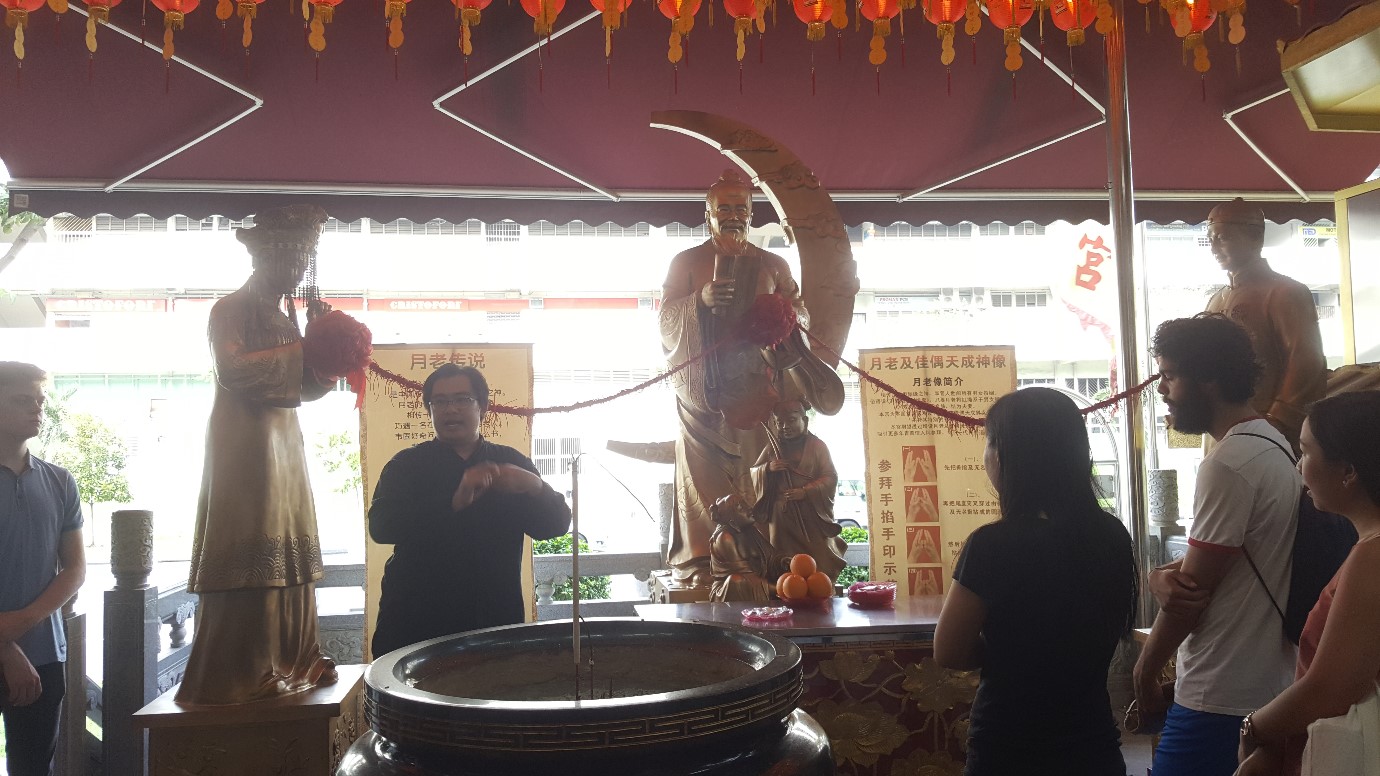 Weiyi introduces different aspects of religious Daoism
Weiyi introduces different aspects of religious Daoism
What is unknown to many, however, is that religious Daoism can be traced back to philosophical Daoism. This is where students of Chinese philosophy find a better grasp of the intricacies surrounding Daoist immortality. While religious Daoism differs significantly from philosophical Daoism, we have learnt that fundamentally, religious Daoism stems from philosophical Daoist scriptures, written specifically by Laozi and Zhuangzi. Our classes in Chinese philosophy therefore allowed us a deeper understanding of the traditions in religious Daoism.
The most prolific similarity, and most fundamental attribute of religious Daoism and philosophical Daoism, lies in a single Chinese character – Dao. The religious Daoist way of life originates from the Dao, or what Western philosophers now know as the Way. Weiyi emphasizes that understanding the Dao is critical to understanding religious Daoism.
Weiyi explains that the Dao encapsulates the Daoist way of life. The Dao is their intuitive knowledge of how to live life. Both religious Daoists and students of Chinese philosophy accede that Dao cannot be grasped full-heartedly as just a concept; it is known only through actual living experience of one's everyday being. We then realize that, to the religious Daoists, cultivating the Dao is hence an active and holistic lifelong practice.
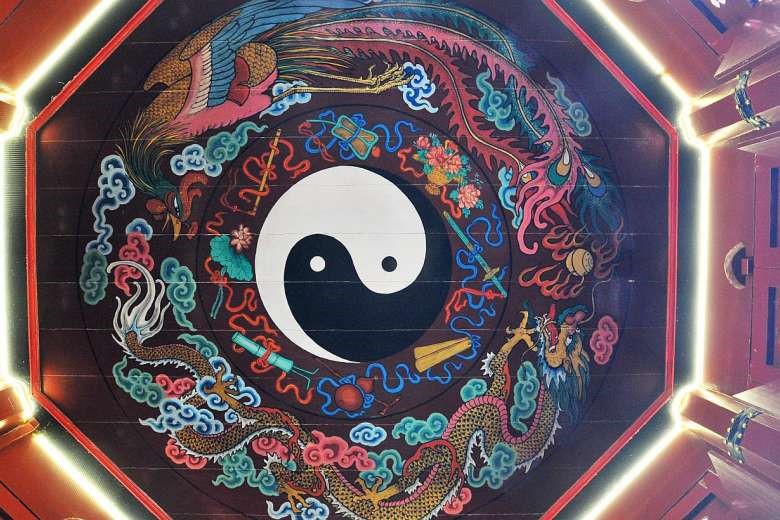 The Yin-Yang is an embodiment of Dao, and reflects the cyclical nature of the world
The Yin-Yang is an embodiment of Dao, and reflects the cyclical nature of the world
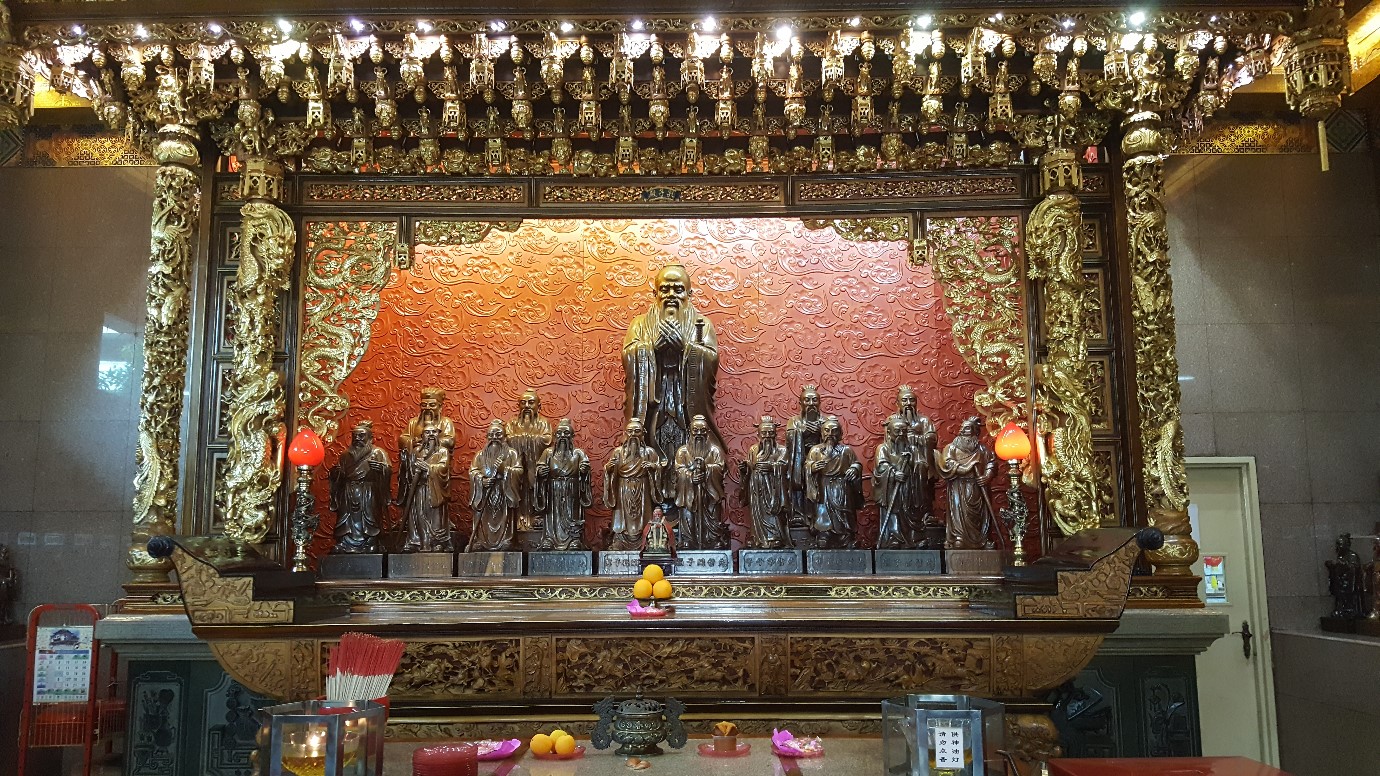 A sculpture of Confucius is also found in the San Qing Gong temple, a mark of respect for another prominent Chinese philosophy that articulates the Dao
A sculpture of Confucius is also found in the San Qing Gong temple, a mark of respect for another prominent Chinese philosophy that articulates the Dao
Weiyi then highlights that the temple is the physical embodiment of the Daoist practices around the Dao, and the amalgamation of the belief that immortality is ultimately attainable. In cultivating toward immortality, Daoists practice a myriad of rituals that allow their inner vitality and energy to flow unobstructed within the body, thereby allowing for inner peace. Weiyi indicates that the various deities that they worship also allow a Daoist to smoothen the flow of inner vitality, bringing them health, prosperity, and a deeper understanding of the self. This is considered to be a form of ideal balance and harmony with the Dao. Weiyi does not explicitly say this, but this also appears to be the secret to spiritual immortality.
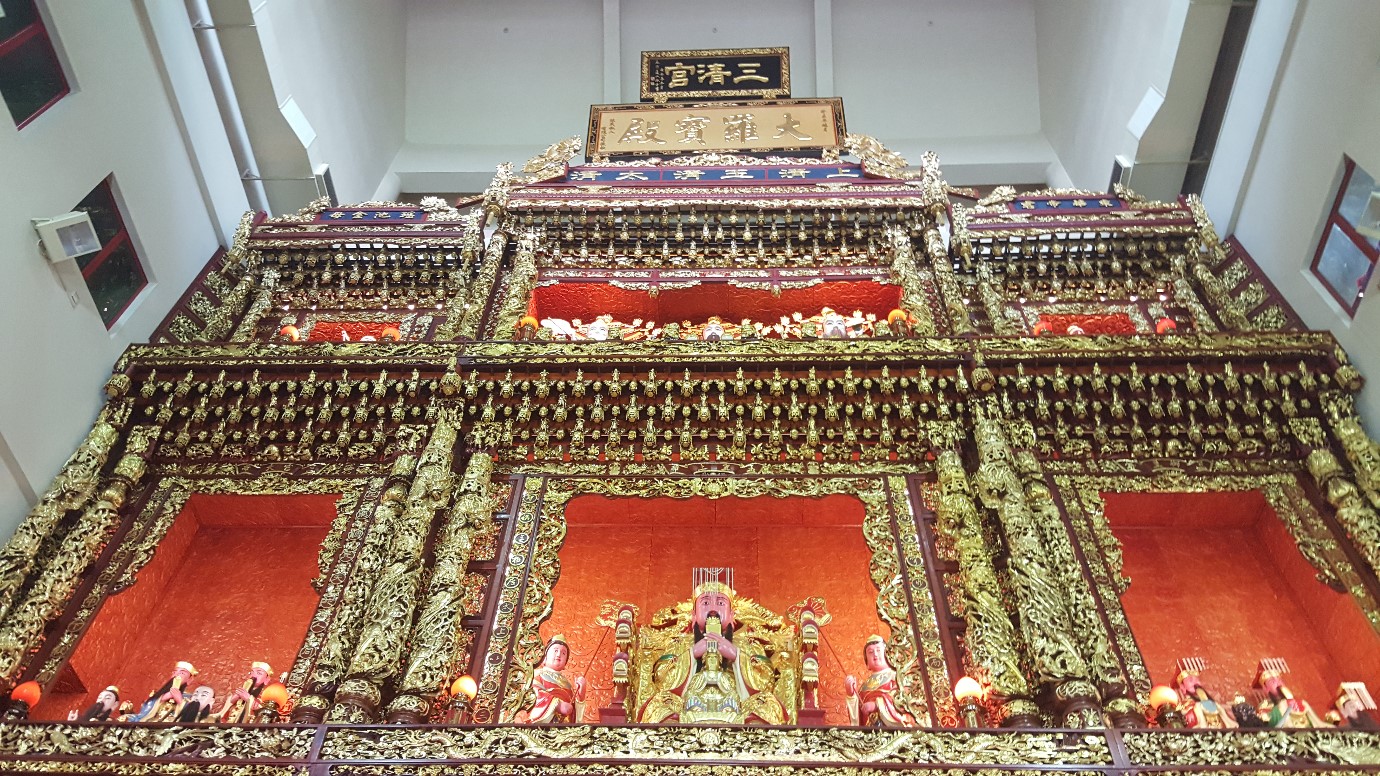 There are many deities that the Daoists worship, including the Jade Emperor (bottom-centre), the ruler of the Heavens
There are many deities that the Daoists worship, including the Jade Emperor (bottom-centre), the ruler of the Heavens
However, even if we think we know the secret, there are far too many intricacies surrounding Daoism, similar to that of many other faiths. Weiyi indicates that it takes lifetimes of worship, cultivation, and meditation to truly understand the meaning of Daoist spiritual immortality, and to truly understand the meaning of the Dao.
My trip to the San Qing Gong Daoist temple allowed me to realize the omnipresence of something greater, far greater, than anything we can ever comprehend. The various aspects of Daoism, as explained by Weiyi, introduces to us critical ideas of philosophical Daoism that cannot be learnt only from reading a myriad of books – the Dao must be learnt, and even as it may be taught, it has to be experienced.
Everything we see in the temple is a reflection that the Dao has both physical and metaphysical representations, manifesting itself over the course of its history. The single Chinese character has evolved from representing intrinsic virtues, to what some call the truest way of living life. The Dao has become a core value of the Chinese community, a value that has transcended not just time, but also space. Why? Because the Dao can only be felt, but can never be seen.
So what is Dao? What is the Way of Life? The Daoists may have found it, but even as they try so hard to explain it, the Dao can never be completely elucidated to the common man. Are you looking for the Way of Life? Are you seeking to understand the complexities of the different ideas of the Dao?
I could give you an answer. Or perhaps you would like to find out yourself. And then PHIL207 Introduction to Classical Chinese Philosophy would be a good place to start.